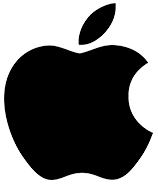
The retail industry, like the larger world around it, is undergoing vast, fast changes; traditional ways of doing business are being upended as our country grows younger. This cultural dynamic is leading many in the music industry to invest heavily in subscription programs, a business model that had once been the exclusive domain of “record of the month” clubs. However, when Goldman Sachs proposed last month that Apple, after recording its first annual sales decline in 15 years, should consider developing a bundled subscription product, the suggestion sparked another round of interesting debates.
These discussions, which have intensified in recent years, focus on the idea of turning to subscription solutions to bolster the bottom lines of individual businesses. Subscription commerce has played an integral economic role for decades, primarily in the newspaper, magazine, and cable TV fields. In the retail industry, of course, Amazon’s rise to power — indeed, dominance — has been driven primarily by the strength of its subscription program. Amazon Prime’s suite of services, from free 2-day shipping to streaming video, streaming music, and more, appeals to an increasing number of U.S. consumers; it’s estimated that half of all households in this country will subscribe to the program by year’s end. Prime’s success has helped confirm the value of the subscription model to retailers and others.
Apple’s subscription service, as imagined by Goldman Sachs analysts, would cost $50 a month and include the following benefits:
- A new iPhone every year, with AppleCare included
- An Apple TV device, which will be replaced every third year
- Access to the Apple TV content service; and
- Access to the streaming Apple Music service

This package would give consumers ongoing access to Apple’s newest technologies and a wide range of music and other content, while substantially reducing their upfront financial burdens. From Apple’s viewpoints, a subscription program would benefit the company in several ways:
It would “lock in” iPhone customers
Apple has an enviable base of incredibly loyal fans, but its share of the (nearly saturated) global smartphone market continues to recede. As of Q3 2016, almost 90% of the smartphones worldwide were Android-based. Apple currently has a 44% share of the U.S. market, but its growth has stalled, and the iPhone 7 isn’t expected to reverse that trend. Offering subscribers automatic iPhone upgrades in exchange for an affordable monthly fee would surely compel many already-dedicated users to commit to Apple for the foreseeable future.
Expanding the Apple TV and Music audiences would create more opportunities
Apple has mostly steered clear of content creation, even as Netflix and Amazon reel in awards, attention, and acclaim for their original programming. Subscription revenue could help Apple develop new shows and movies, acquire existing series and films, and/or build out the iTunes library, thereby attracting new customers. Apple Music, for example, has a very high subscriber churn rate; using the fees to secure exclusive rights to artists and music could keep current customers in the fold, draw new ones away from Spotify and other services, and increase overall loyalty.

It would generate steady revenue
A continuous stream of monthly income would give Apple another safety net of sorts, in case iPhone sales decrease any further. Apple has already embraced the subscription model, both with Apple Music and with its App Store, so it wouldn’t be swimming in uncharted waters. If Apple needs more assurance, Amazon has already shown how effective a strong subscription program is at retaining customers; per a recent study by CIRP:
- 73 percent of consumers who sign up for a 30-day free trial in Prime pay for a full year;
- 91 percent of those members then sign up for a second year; and
- 96 percent of those members then renew for a third year.
If an Apple subscription product can draw people into its ecosystem like Prime does for Amazon, Apple will expand its existing audience of very loyal, repeat customers and enjoy the benefits of that heightened devotion.
However, Apple can do all that only if it turns the subscription concept into reality. Its program doesn’t have to take the form proposed by Goldman Sachs, but the tech giant has to find new ways to compete in today’s ever-changing market. Implementing an established, proven business model would create all sorts of opportunities (and a buffer) for Apple, freeing it up to continue searching for that elusive but essential item most closely associated with its brand — the next big idea.